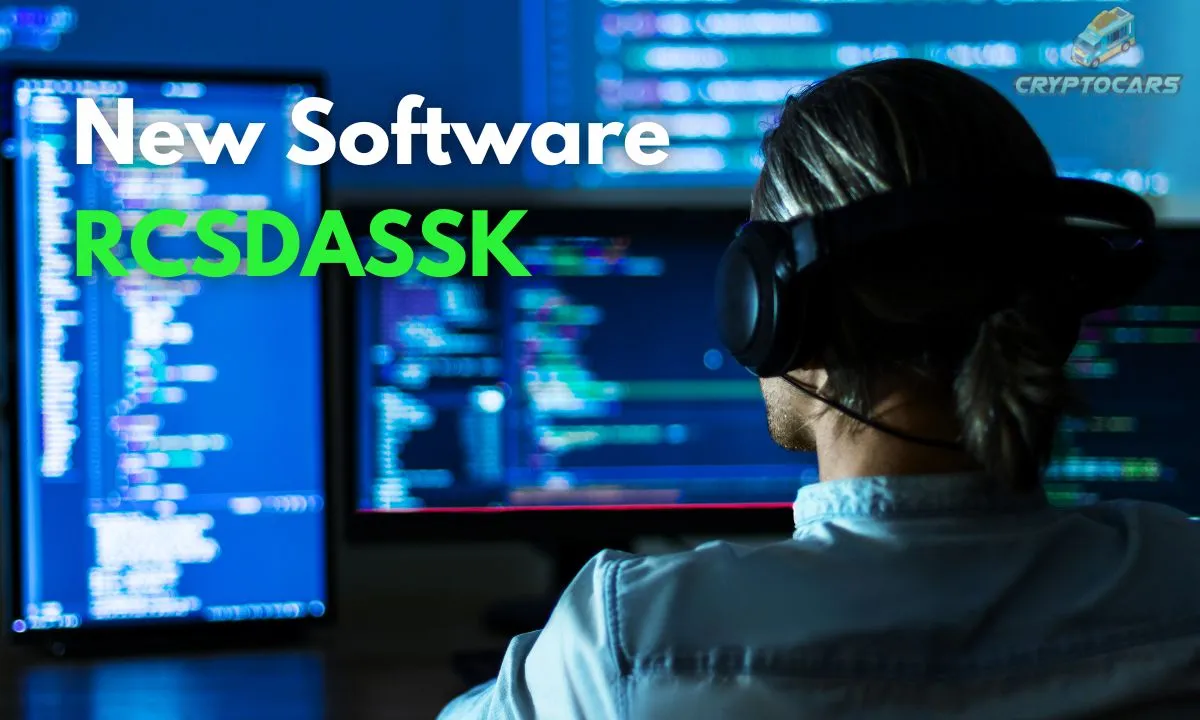The launch of New Software Rcsdassk has been making waves in the tech industry. Known for its powerful features, user-friendly interface, and flexibility, Rcsdassk has the potential to transform workflows for individuals and businesses alike. However, like any new tool, its success depends not just on the software itself but on how well it’s used.
Many users—especially beginners—fall into common traps when getting started. These mistakes can lead to poor performance, security vulnerabilities, and missed opportunities to take full advantage of what the software offers.
This article will walk you through the most frequent mistakes people make when using New Software Rcsdassk, and provide practical advice for avoiding them.
1. Skipping the Initial Setup Wizard
When you first install Rcsdassk, the setup wizard helps configure essential settings like security preferences, default templates, and integrations. Many users skip this step in a rush to start using the software.
Why it’s a mistake:
Skipping initial setup means you might be running the software with default settings, which may not be optimized for your needs or security requirements.
How to avoid it:
-
Take time to go through the setup prompts.
-
Adjust user permissions, select preferred themes, and connect relevant third-party tools before active use.
2. Ignoring System Requirements
Rcsdassk is a feature-rich platform, but that also means it has minimum system requirements. Some users install it on outdated machines or low-spec servers, resulting in slow performance and glitches.
Why it’s a mistake:
Poor hardware compatibility can cause frequent crashes, slow load times, and even data corruption.
How to avoid it:
-
Check the official Rcsdassk documentation for CPU, RAM, and storage requirements.
-
Update your operating system and drivers before installation.
3. Not Creating Regular Backups
One of the most overlooked but critical aspects of using Rcsdassk is data backup. Even though the software is reliable, unexpected events—like hardware failure or cyberattacks—can lead to data loss.
Why it’s a mistake:
Without backups, restoring your system after a failure can be nearly impossible.
How to avoid it:
-
Enable Rcsdassk’s built-in backup feature (if available).
-
Store backups on secure cloud storage or an external drive.
-
Test your backup restoration process periodically.
4. Overlooking Security Settings
Rcsdassk offers several security controls, such as user authentication, data encryption, and permission management. Many users leave these at default levels, assuming they’re already secure enough.
Why it’s a mistake:
Default security settings may not meet your organization’s requirements and can leave your system vulnerable.
How to avoid it:
-
Use strong passwords and enable two-factor authentication.
-
Restrict permissions so users only have access to what they need.
-
Regularly update your security preferences.
5. Failing to Update the Software
Software updates often include bug fixes, performance improvements, and security patches. Unfortunately, some users postpone or ignore updates.
Why it’s a mistake:
Outdated software is more likely to have security holes and compatibility issues.
How to avoid it:
-
Enable automatic updates if possible.
-
If manual updates are required, set a reminder to check for new versions weekly.
6. Neglecting Training for Users
Businesses sometimes roll out Rcsdassk without providing training for employees, assuming they’ll “figure it out” as they go.
Why it’s a mistake:
Untrained users are more likely to misuse features, make errors, and waste time.
How to avoid it:
-
Organize onboarding sessions for new users.
-
Provide access to official tutorials, documentation, and help forums.
7. Using All Features at Once
Rcsdassk is packed with tools, but trying to master everything immediately can overwhelm new users.
Why it’s a mistake:
Jumping between too many features at once can cause confusion and inconsistent workflows.
How to avoid it:
-
Start with core features that are most relevant to your tasks.
-
Gradually explore advanced tools once you’re comfortable.
8. Poor Integration Management
One of Rcsdassk’s strengths is its ability to integrate with other applications. However, adding too many integrations without proper oversight can cause conflicts and slowdowns.
Why it’s a mistake:
Some integrations may duplicate functionality or compete for system resources.
How to avoid it:
-
Only install integrations you actively need.
-
Review and remove unused integrations regularly.
9. Ignoring Performance Monitoring
Rcsdassk has built-in tools for tracking performance metrics, such as load times and error logs. Many users ignore these until a problem arises.
Why it’s a mistake:
Small issues can escalate into major problems if left unchecked.
How to avoid it:
-
Review performance reports monthly.
-
Investigate recurring errors promptly.
10. Storing Sensitive Data Without Encryption
Some users store sensitive files and information in Rcsdassk without enabling encryption features.
Why it’s a mistake:
Unencrypted data can be accessed if your account or server is compromised.
How to avoid it:
-
Turn on encryption for all sensitive data.
-
Follow best practices for secure file sharing.
11. Relying Only on Default Templates
Rcsdassk offers pre-designed templates for common tasks, but relying solely on them may limit creativity and efficiency.
Why it’s a mistake:
Default templates may not fully match your specific needs.
How to avoid it:
-
Customize templates to reflect your workflow.
-
Save your own versions for quick future use.
12. Not Testing Before Deployment
In a business setting, deploying new Rcsdassk configurations without testing them in a sandbox environment can lead to serious disruptions.
Why it’s a mistake:
If something goes wrong, it can halt operations and require emergency fixes.
How to avoid it:
-
Test major changes in a separate environment first.
-
Roll out updates in phases instead of all at once.
13. Overloading the System with Unnecessary Data
Rcsdassk can store large volumes of data, but uploading unnecessary files and outdated records can slow down the system.
Why it’s a mistake:
Cluttered storage makes it harder to find important information and can affect performance.
How to avoid it:
-
Create a data management policy.
-
Archive or delete old files regularly.
14. Not Leveraging Automation Features
Rcsdassk includes automation tools that can save time by handling repetitive tasks, yet many users don’t take advantage of them.
Why it’s a mistake:
Manually performing tasks that could be automated wastes time and increases the chance of human error.
How to avoid it:
-
Identify repetitive actions in your workflow.
-
Set up automation rules for those tasks.
15. Avoiding Customer Support
When issues arise, some users try to troubleshoot everything on their own without consulting Rcsdassk’s customer support.
Why it’s a mistake:
You might spend hours fixing something that support could solve in minutes.
How to avoid it:
-
Contact support when needed.
-
Use help forums and official FAQs for quick answers.
16. Mismanaging User Roles
Assigning the wrong user roles and permissions can lead to confusion or security risks.
Why it’s a mistake:
Giving too much access to inexperienced users can result in accidental changes or data loss.
How to avoid it:
-
Assign roles based on responsibility and experience.
-
Review permissions every few months.
17. Not Documenting Changes
In team environments, failing to document software changes—such as settings adjustments or new integrations—can cause miscommunication.
Why it’s a mistake:
Other team members might not understand why changes were made, leading to errors.
How to avoid it:
-
Keep a shared log of all configuration changes.
-
Notify relevant team members when updates occur.
18. Forgetting to Review Compliance Requirements
If you’re in a regulated industry, Rcsdassk configurations must align with compliance rules (e.g., GDPR, HIPAA).
Why it’s a mistake:
Non-compliance can result in legal penalties.
How to avoid it:
-
Review compliance requirements regularly.
-
Work with legal or compliance teams when configuring the software.
19. Using Weak Passwords
It’s surprising how many users protect their accounts with weak or reused passwords.
Why it’s a mistake:
Weak passwords are easy targets for hackers.
How to avoid it:
-
Use complex, unique passwords.
-
Consider a password manager for security.
20. Not Planning for Scalability
As your needs grow, so should your Rcsdassk setup. Some users don’t think about scalability until they run into limitations.
Why it’s a mistake:
Sudden growth can overload your current setup.
How to avoid it:
-
Choose scalable storage and processing plans from the start.
-
Periodically review your system’s capacity.
Conclusion
New Software Rcsdassk is a powerful platform, but even the most advanced tool can underperform if used incorrectly. By avoiding these 20 common mistakes, you’ll not only protect your data and enhance security but also maximize the software’s potential.
The key is proactive management—take the time to configure properly, update regularly, train your team, and review performance. That way, Rcsdassk becomes a true asset rather than a source of frustration.



